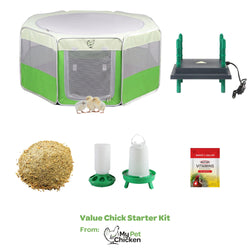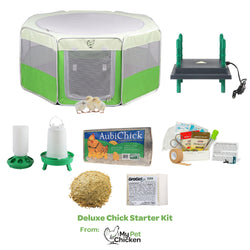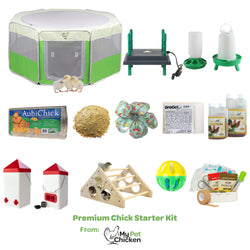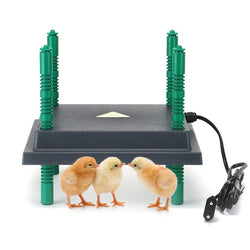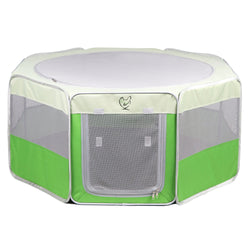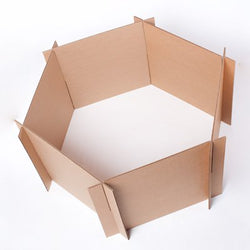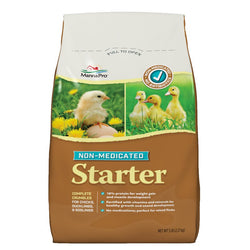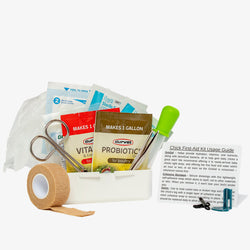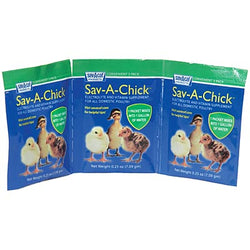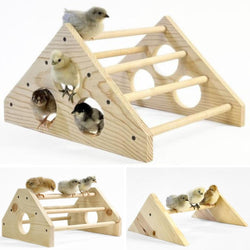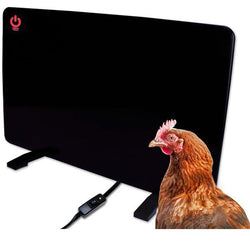What does BBS stand for with chickens?
Back to blog
BBS stands for "Blue-Black-Splash." But that doesn't tell you a whole lot, either, if you don't know how the genetics of blue plumage colors works!
When you breed a blue bird to a blue bird, about 50% of the offspring will be blue (a grey color), 25% will be black, and 25% will be splash (a white or pale grey color with splashes of darker grey and black).

So, when you order BBS Cochin chicks, for example, you'll receive a mix of blue, black, and splash colors. To get 100% blue birds, you would want to breed black to splash. But if you can produce 100% blue, then why, one wonders, wouldn't you simply ALWAYS breed black to splash to provide 100% blue chickens?
Well, sometimes you do. But it sort of strangles the number of birds for your breeding flock, because you can't put black and splash roosters in with black and splash hens and get 100% blue. All the roosters have to be one color, and all the hens have to be the other (otherwise you'd have splash roosters breeding with splash hens producing some splash chicks--and black to black would produce black--not all blue!).

Splash Silkie
But even if you have all black roosters with all splash hens (or vice versa), the color blue is a bit variable. So, with black-to-splash you're not able to see what your breeding flock will produce. Blue isn't simply a flat grey that looks the same no matter what. It's more of a medium grey with almost a lacing of a darker, smoky grey around the outside.

Blue Favaucana
You don't want too much or too little smoke. If you're not exhibiting your birds, breeding blue to blue matters a bit less. And it matters less if you're producing a designer breed or a cross breed, because they don't necessarily breed true into the next generation, anyway. Plus, they can't usually be shown expect in special non-APA categories. But to get the best blue, ideally you want to choose the best-looking blues to breed together.... and that means BBS, producing blue, black, and splash chicks.
When you breed a blue bird to a blue bird, about 50% of the offspring will be blue (a grey color), 25% will be black, and 25% will be splash (a white or pale grey color with splashes of darker grey and black).

So, when you order BBS Cochin chicks, for example, you'll receive a mix of blue, black, and splash colors. To get 100% blue birds, you would want to breed black to splash. But if you can produce 100% blue, then why, one wonders, wouldn't you simply ALWAYS breed black to splash to provide 100% blue chickens?
Well, sometimes you do. But it sort of strangles the number of birds for your breeding flock, because you can't put black and splash roosters in with black and splash hens and get 100% blue. All the roosters have to be one color, and all the hens have to be the other (otherwise you'd have splash roosters breeding with splash hens producing some splash chicks--and black to black would produce black--not all blue!).

Splash Silkie
But even if you have all black roosters with all splash hens (or vice versa), the color blue is a bit variable. So, with black-to-splash you're not able to see what your breeding flock will produce. Blue isn't simply a flat grey that looks the same no matter what. It's more of a medium grey with almost a lacing of a darker, smoky grey around the outside.

Blue Favaucana
You don't want too much or too little smoke. If you're not exhibiting your birds, breeding blue to blue matters a bit less. And it matters less if you're producing a designer breed or a cross breed, because they don't necessarily breed true into the next generation, anyway. Plus, they can't usually be shown expect in special non-APA categories. But to get the best blue, ideally you want to choose the best-looking blues to breed together.... and that means BBS, producing blue, black, and splash chicks.

